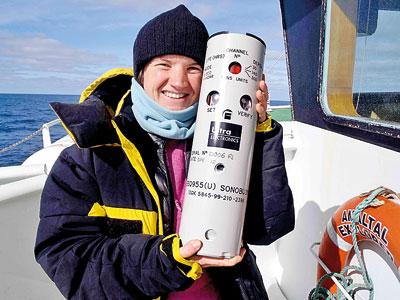Living in harm’s way: Whales and the threat of being struck by ships
View(s):
Susannah Calderan
One of the major threats to large whales globally is being struck by ships, which can cause severe injuries and death. These incidents happen throughout the world’s oceans, but particularly in areas where shipping and whales are concentrated. Sri Lanka is renowned for its blue whales, but their habitat lies within one of the world’s busiest shipping routes.
The Wildlife and Nature Protection Society (WNPS) lecture on Thursday, December 10 will be on ‘Ship strikes on large whales: Sri Lankan Blue Whales within a global context’. It will be delivered by Susannah Calderan at 6 p.m. via Zoom and FB Live
Register online https://forms.gle/Ks28pckt7GdywUZ87
Ms Calderan will describe the research they have carried out in Sri Lanka in collaboration with the University of Ruhuna to understand blue whale distribution of the south coast, and assess the ship strike risk. Ship strikes south of Sri Lanka mainly affect blue whales, but also other species such as sperm whales. The problem is particularly acute in Sri Lanka as the shipping lane runs through an area of high biological productivity, so not only are whales affected by the high level of shipping traffic, but also local fishermen and whale watch boats.
The WNPS Public lecture is supported by Nations Trust Bank.

A Sperm Whale in Trincomalee. Pic by Gehan de Silva Wijeyeratne


